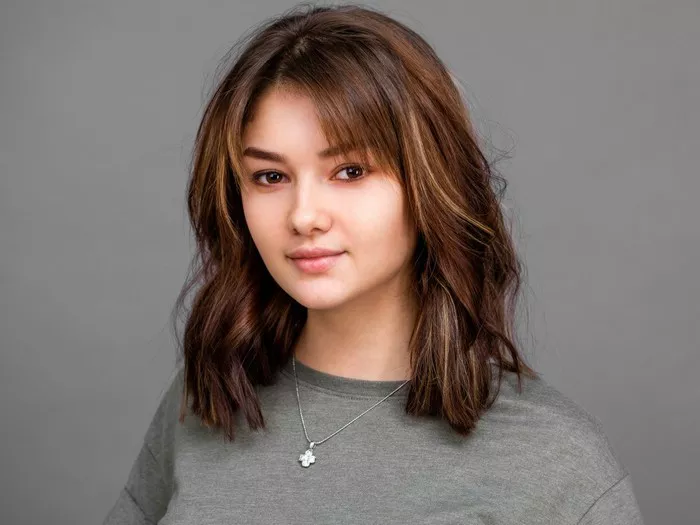Asian hair is often associated with certain characteristics, including straightness, smoothness, and thickness. However, the notion that all Asians have thick hair overlooks the diversity of hair textures within Asian populations. In this article, we will delve into the complexities of Asian hair texture, debunk common myths, and highlight the variability that exists among individuals of Asian descent.
1. Understanding Asian Hair Texture
Asian hair is characterized by its straightness and resilience, which is attributed to the shape of the hair follicle. The round shape of Asian hair follicles contributes to its straight appearance, whereas other ethnicities may have oval or elliptical-shaped follicles. While many Asians do have thick hair, the thickness can vary significantly depending on factors such as genetics, age, and hair care practices.
2. Diversity Within Asian Populations
It’s essential to recognize that Asia is a vast and diverse continent comprising numerous ethnicities, cultures, and genetic backgrounds. As a result, there is considerable variation in hair texture among individuals of Asian descent. For example:
East Asians: People from East Asian countries such as China, Japan, and Korea often have straight, thick hair, although variations exist within these populations.
Southeast Asians: Individuals from Southeast Asian countries such as Thailand, Vietnam, and Indonesia may have a wider range of hair textures, including straight, wavy, and curly.
South Asians: South Asians, including those from India, Pakistan, and Bangladesh, can have diverse hair textures ranging from straight to curly, with varying degrees of thickness.
3. Factors Influencing Hair Thickness
While genetics play a significant role in determining hair thickness, several other factors can influence the texture and density of Asian hair:
Hair Care Practices: The use of styling products, heat tools, and chemical treatments can affect the thickness and health of the hair over time. Excessive heat styling and harsh chemical treatments can lead to damage and thinning of the hair shaft.
Age: As people age, the texture and thickness of their hair may change due to hormonal fluctuations, environmental factors, and natural aging processes. Some individuals may experience thinning or loss of hair density as they get older.
Nutrition and Health: Diet, hydration, and overall health can impact hair growth and thickness. A balanced diet rich in vitamins, minerals, and protein is essential for maintaining healthy hair.
4. Common Myths About Asian Hair
Several myths and misconceptions surround Asian hair, including:
All Asians Have Thick Hair: While many Asians do have thick hair, it’s not universally true for all individuals of Asian descent. Hair thickness can vary widely within Asian populations, just as it does among people of other ethnicities.
Asian Hair is Always Straight: While straight hair is common among Asians, not all individuals of Asian descent have straight hair. Many Asians have wavy or curly hair, especially in regions with diverse ethnic backgrounds.
Asian Hair is Low Maintenance: While Asian hair may require less frequent washing due to lower oil production, it still requires proper care and maintenance to stay healthy and vibrant.
5. Embracing Hair Diversity
It’s essential to celebrate and embrace the diversity of hair textures within Asian communities and beyond. Rather than subscribing to stereotypes or generalizations, we should recognize and appreciate the unique characteristics of each individual’s hair. By acknowledging the variability of Asian hair texture, we can promote inclusivity and challenge narrow beauty standards.
6. The Importance of Hair Care
Regardless of hair texture, proper hair care is essential for maintaining healthy, beautiful hair. This includes:
Regular Washing: Wash your hair regularly with a gentle shampoo to remove dirt, oil, and product buildup.
Conditioning: Use a moisturizing conditioner to nourish and hydrate the hair, regardless of thickness or texture.
Minimal Heat Styling: Limit the use of heat styling tools to prevent damage and maintain hair health.
Protective Styling: Wear hairstyles that protect the hair from environmental damage and manipulation, such as braids, buns, and twists.
Regular Trimming: Schedule regular trims to remove split ends and maintain the overall health and appearance of your hair.
Conclusion
In conclusion, the idea that all Asians have thick hair oversimplifies the complexity and diversity of hair textures within Asian populations. While many Asians do have thick hair, others may have varying degrees of thickness, waviness, or curliness. Factors such as genetics, age, and hair care practices influence hair texture and thickness, highlighting the need to recognize and celebrate hair diversity. By challenging stereotypes and embracing individuality, we can promote inclusivity and appreciation for the unique beauty of all hair types.
Should I Wash My Hair Everyday If I Workout

